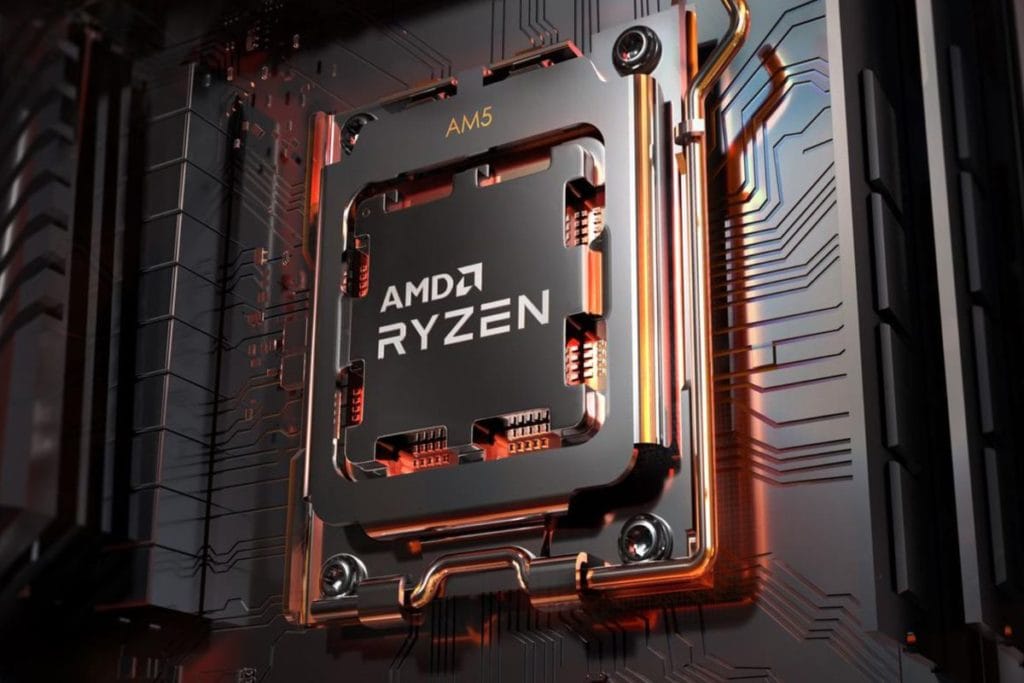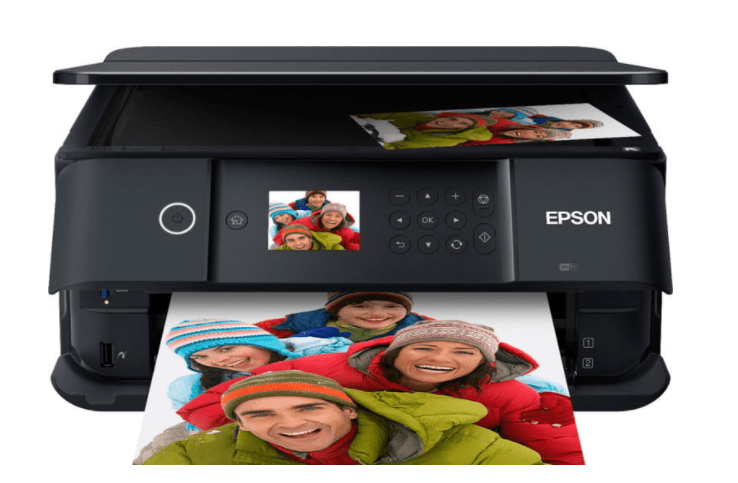AMD launched in 2022 with its new Ryzen 6000 mobile CPUs and the Ryzen 5800X3D, its current-gen gaming monarch. However, real next-generation AMD CPUs will be available later this year, with a new Zen 4 architecture, a new 5nm production node, faster clock speeds than ever before, and a vastly enlarged feature and supported hardware list. AMD’s Ryzen 7000 processors are expected to be the most important CPUs introduced by AMD since the first-generation Ryzen chips in 2017.
Here’s everything you need to know about Ryzen 7000 so far.

Architecture
The Ryzen 7000 processors are built around the new Zen 4 architecture. This is a continuation of the Zen microarchitecture that AMD has been utilizing since Ryzen 1000, but it advances the chiplet design pioneered on Zen 2 and is based on TSMC’s latest improved 5nm production node.
The 5nm node, designated as N5 at TSMC, is said to provide a 15% speed gain and 1.8X transistor density over N7, allowing the node to consume 30% less power for improved performance and efficiency. That’s not to assume Zen 4 will match those gains, but it’s likely what’s allowed such big increases in clock speeds without a corresponding increase in TDP.
AMD revealed a maximum TDP of 170W on its new-generation processors, which have undergone significant design changes. Each 5nm chiplet will feature up to eight cores and a 1MB L2 cache per core. In addition, each die will include a new 6nm I/O die with Radeon RDNA 2 graphics and AI acceleration.
It’s unclear whether the new chips will benefit from AMD’s 3D VCache technology, which is used in the 5800X3D CPU, but since AMD hasn’t released any details on it, it’s possible that it’ll be used for a mid-generation refresh to boost gaming ability between CPU lines, similar to how AMD did with Zen 3.
You may also like AMD Ryzen 6000 CPU: The Performance Punch Processor
Pricing and availability
AMD revealed at Computex 2022 that their Ryzen 7000 CPUs and AM5 motherboards would be available in the fall of 2022, between September and November. This is a little later than some had hoped for, but it shows that the original Q3 forecasts were more late-Q3 than early-Q3.
Pricing is yet unknown, but it is expected to be similar to its current Ryzen 5000 CPUs, which held their launch prices for the majority of their lifecycle, only lowering after the launch of Intel’s fiercely competitive Alder Lake processors.
Here are the costs of Ryzen 5000 processors at the time of writing:
- Ryzen 5 5600X: $200
- Ryzen 7 5700X: $299
- Ryzen 7 5800X: $310
- Ryzen 7 5800X3D: $450
- Ryzen 9 5900X: $391
- Ryzen 9 5950X: $549
These are much lower than when the chips were first released and have been reduced ahead of Zen 4’s launch, thus expect prices to be close to 50% higher when Zen 4 is released.
You may also like Lenovo IdeaPad Slim 7 Carbon: The Touchscreen AMD Ryzen
Performance
We still don’t have solid figures on how well AM4 CPUs perform, but the facts are starting to emerge, even if they must be seen with skepticism.
AMD estimates that the new CPUs would have a more than 15% boost in single-threaded performance, which, if extrapolated across many cores at the same time, would give Zen 4 CPUs a massive performance edge over both Zen 3 and Intel’s 12th-generation Alder Lake processors.
The higher performance is due to process and architecture efficiency improvements, as well as a significant increase in frequency. AMD demonstrated a recorded game of Ghostwire Tokyo running on a Zen 4 CPU at up to 5.52 GHz, albeit the frequency fluctuated between that and a more modest 5.3GHz. That’s a significant boost above the 5950X’s advertised 4.9GHz, and even more than its normal real-world frequencies, which were lower in games.
Managing these types of rates at a maximum TDP of under 170W would be a significant gain for AMD, as it would mean not only world-beating gaming performance but also doing so at a power draw far lower than the flagship Intel Alder Lake CPUs. This isn’t to say it won’t face greater competition from the impending Raptor Lake CPUs, but the fact that pre-production chips can already reach such high frequencies bodes well for AMD’s debut.
Aside from games, AMD claims significant increases in multi-threaded performance in productivity software. In a Computex demo, it showcased an undisclosed eight-core Ryzen 7000 CPU competing in Blender against Intel’s 12900K. It finished the brief run up to 31 percent faster than the Intel CPU.
Support for DDR5 memory is another feature that should assist enhance performance. AMD claimed to be running a kit of DDR5 6,000 MHz memory in their Computex test notes, which is much faster than the 4800MHz memory officially supported by Intel’s 12th generation CPUs.
It’s unclear whether AMD will support DDR4 memory with Zen 4 as well, for improved inter-generational compatibility, but a report from Tom’s Hardware indicates AMD’s AM5 platform — which will house Ryzen 7000 CPUs — will only support DDR5, with DDR4 support perhaps being discontinued entirely. Given how much more costly DDR5 is right now compared to DDR4, you may have to factor in a significant price premium when purchasing memory to accompany a Ryzen 7000 CPU.
You may also like AMD FSR (FidelityFX Super Resolution)
Integrated graphics and APUs
Unlike earlier generations of Ryzen processors, in which AMD introduced mainstream CPUs and a narrower range of accelerated processing units (APUs) with integrated graphics, AMD is doing away with that with Ryzen 7000. AMD isn’t having to make any sacrifices to include integrated graphics because the GPU is on the I/O die rather than the main CPU chiplets, therefore all Ryzen 7000 chips will have an onboard RDNA 2 GPU.
RDNA 2 is the same architecture that AMD is currently using on its Radeon RX 6000 graphics cards, as well as the Xbox Series X and PlayStation 5, as well as the new Ryzen 6000 mobile CPUs, so these chips should provide excellent entry-level gaming capabilities even when not paired with a dedicated graphics card.
This is useful not just for everyone who does not want to buy a new GPU, but also for troubleshooting GPU difficulties.
You may also like AMD Radeon RX 6500 XT: The Power Color Gaming Graphics Card
New chipset and a new socket
AMD is eliminating the AM4 socket, which it has used since the release of the first-generation Ryzen chips, with the next generation of CPUs. That’s not surprising given that the socket will be five years old by the time next-generation Ryzen CPUs are released.
This new socket will employ an LGA1718, Land Grid Array design, with CPU pins located on the motherboard rather than on the CPU. For numerous generations, Intel has used LGA sockets, whereas AMD has used the older Pin Grid Array (PGA) socket design for everything up to Ryzen 5000.
LGA1718 will have 1,718 pins on the motherboard, as the name says. LGA designs can allow increased pin density, as evidenced by the AM4’s 1,331 pins. These extra pins will aid enable DDR5 memory support, as well as PCI-Express 5.0 and enhance overall performance.
These new AM5 sockets will be part of a new generation of motherboards in the 600 series. The X670E extreme motherboards will have the highest quality VRMs for enhanced overclocking, as well as PCI-E 5 support on every M2 and PCI-E slot; X670 boards will have mainstream overclocking potential, as well as PCI-E 5 on both the first x16 PCI-Express slot and at least one M.2 slot, whereas B650 motherboards will have PCI-E 5 for at least one M.2 slot and PCI-E 4
These new motherboards will support up to 24 PCI-E 5 lanes, 14 USB ports with speeds of up to 20 Gbps, Wi-Fi 6E, and Bluetooth 5.2. Furthermore, AMD 600 motherboards will be able to support up to four HDMI 2.1 or DisplayPort 2 connections thanks to the new integrated graphics.
Despite AMD’s shift to a new socket design, Ryzen 7000 CPUs will retain the same socket size and fully support AM4 coolers.
Would you like to read more about AMD Ryzen 7000-related articles? If so, we invite you to take a look at our other tech topics before you leave!










